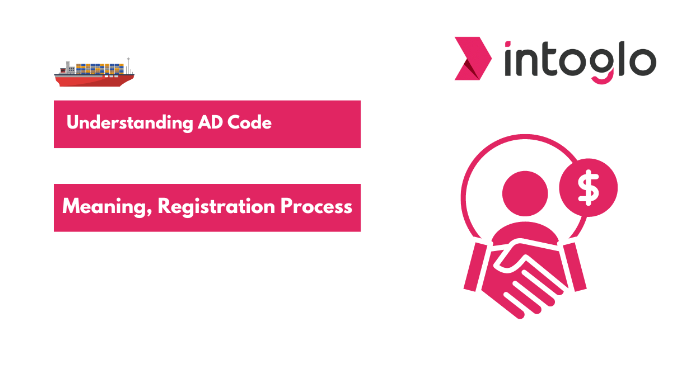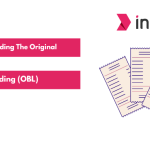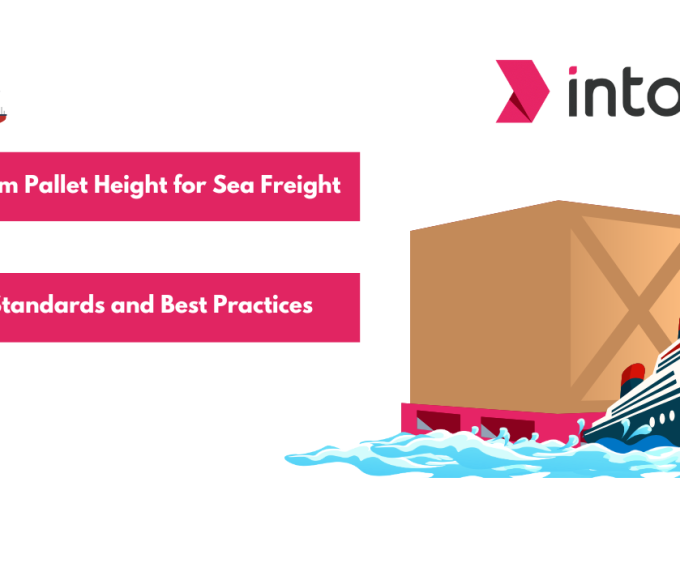Understanding the intricacies of international trade demands a firm grasp of key regulatory elements, one of which is the AD Code. This 14-digit code, issued by an exporter’s bank, is a fundamental requirement for export customs clearance. The issuance of this code mandates that the bank is an authorized dealer of foreign currency, ensuring compliance with stringent financial regulations.
The AD Code is indispensable for businesses aspiring to enter the global market. It’s not merely a bureaucratic formality but a critical link in legal documentation and compliance, facilitating smooth cross-border trade. For online sellers and businesses looking to engage with international buyers, having an AD Code is essential for ensuring that customs authorities verify and approve all export transactions.
In this article, we will go through the AD Code’s significance in export business, its application process, and the detailed steps in registering for one. Whether you’re an experienced exporter or just beginning, understanding the AD Code is crucial for successfully navigating the global trade landscape.
What is an AD Code?
An AD Code, or Authorised Dealer Code, is a 14-digit numerical code assigned to exporters by their banks, which are authorized dealers in foreign currency. This code is crucial for customs clearance of export shipments, ensuring transactions comply with foreign exchange laws.
The AD Code links export transactions to the exporter’s bank account, facilitating the smooth processing of international payments and ensuring compliance with financial regulations. It also allows customs authorities to verify and approve export transactions, providing all goods meet national export standards.
The Importance of AD Code in Export Business
Let’s dive into why this code is indispensable for your export operations:
1. Generates Shipping Bill Numbers and Receives Government Benefits
The AD Code is essential for generating the shipping bill number, a vital document in the export process. Without a shipping bill number, your goods cannot leave the country. Moreover, the AD Code ensures you receive various government benefits, including duty drawbacks, export incentives, and tax exemptions. These benefits can significantly enhance your profit margins and make your products more competitive internationally.
2. Facilitates International Trade
Navigating the complexities of international trade requires strict adherence to regulatory frameworks. The AD Code facilitates this by ensuring compliance with both domestic and international regulations. This code links your export transactions to an authorized bank, providing a transparent trail of all financial activities related to your exports. Compliance saves you from legal complications and builds trust with international partners, paving the way for smoother transactions and long-term relationships.
3. Necessary for Customs Clearance at Every Port
Customs clearance is an essential step in the export process, and the AD Code is mandatory for it. Every port where your goods are cleared requires this code to verify that all documentation is in order. The AD Code is a unique identifier, ensuring your goods move seamlessly through customs. With it, your shipments could avoid delays or even being held up, causing financial losses and damaging your reputation.
How to Apply for an AD Code?
Here’s your definitive guide to applying for an AD Code, ensuring a smooth and efficient process.
Step-by-Step Process for Requesting an AD Code from Your Bank
Step 1: Choose Your Authorized Dealer Bank
- Choose a bank the Reserve Bank of India authorizes to trade in foreign exchange. It is usually your current bank that handles your business transactions.
Step 2: Gather Required Documents
- Collect all necessary documents, including your Import Export Code (IEC) certificate, Goods and Services Tax Identification Number (GSTIN) certificate, and Permanent Account Number (PAN) card.
Step 3: Draft an Application Letter
- Write a formal application letter addressed to the bank’s branch manager requesting the issuance of an AD Code. Include details about your business and the purpose of the AD Code.
Step 4: Submit the Application
- Go to the bank branch and submit your application with all required documentation. Ensure that all information is filled out correctly to avoid delays.
Step 5: Follow Up
- After submission, follow up with the bank to check the status of your application. Banks usually process AD Code requests within a few business days.
Step 6: Receive the AD Code
- Once the bank processes your application, you will receive an authorization letter bearing the AD Code. Keep this letter safe, as it will be required for all future export transactions.
Required Format for the Bank’s Authorization Letter Bearing the AD Code
The authorization letter from the bank should be on the bank’s official letterhead and include the following details:
- Date: The date on which the letter is issued.
- Exporter’s Name and Address: The official name and address of the exporting business.
- Bank Branch Details: The name and address of the bank branch issuing the AD Code.
- Authorized Dealer Code: The unique AD Code assigned to the exporter.
- Signature and Seal: The signature of the bank’s authorized official and the bank’s official seal.
Sample Format:
[Bank’s Letterhead]
Date: [DD/MM/YYYY]
To Whom It May Concern,
This is to certify that [Exporter’s Name], having its registered office at [Exporter’s Address], has been assigned the Authorized Dealer (AD) Code [AD Code] by [Bank’s Name], [Branch Name], located at [Bank Branch Address].
This code is issued to facilitate the export transactions of the entity mentioned above.
[Signature of Bank Official]
[Bank’s Official Seal]
Sincerely,
[Bank’s Name]
Documents Needed for Applying
When applying for an AD Code, ensure you have the following documents ready:
- Import Export Code (IEC) Certificate: Issued by the Directorate General of Foreign Trade (DGFT), this certificate is necessary for import or export business activities.
- Goods and Services Tax Identification Number (GSTIN) Certificate: This certificate is required to confirm the GST registration of your business.
- Permanent Account Number (PAN) Card: A copy of your business’s PAN card to verify your tax identification number.
Always carry both original documents and copies when visiting the bank for submission. This ensures that any verification process can be completed on the spot, reducing the chances of multiple trips.
Registering Your AD Code
Registering an AD Code ensures smooth customs clearance and hassle-free international trade. Here’s a comprehensive guide to help you through the process.
1. Registering an AD Code with Custom House Agents at the Exporting Port
Step 1: Prepare Your Documents
- Ensure you have all necessary documents, including your AD Code on the bank’s letterhead, a copy of your Import Export Code (IEC) certificate, and your GST registration certificate.
Step 2: Contact a Custom House Agent (CHA)
- Identify and contact a reputable Custom House Agent at your exporting port. CHAs are licensed professionals who facilitate customs clearance and can assist in registering your AD Code.
Step 3: Submit the Documents
- Submit the required documents to the CHA. They will verify and process the documents, ensuring all details are correct and compliant with customs regulations.
Step 4: Registration with Customs
- The CHA will then register your AD Code with the customs authorities at the port. This step is crucial for linking your export transactions with your AD Code, facilitating smooth processing and clearance of your goods.
Step 5: Confirmation
- Once you have completed the registration, you will receive a confirmation from the CHA. Keep this confirmation for your records, as it verifies that your AD Code is registered and active at the port.
Registering AD Code Online via ICEGATE
Step 1: Access the ICEGATE Portal
- Visit the ICEGATE (Indian Customs Electronic Gateway) website at www.icegate.gov.in.
Step 2: Login or Register
- Register on the ICEGATE portal by providing your business information if you are a new user. Existing users can log in using their ID and password.
Step 3: Navigate to AD Code Registration
- Once logged in, go to the “Services” section and select “AD Code Registration.”
Step 4: Fill in the Details
- Enter your AD Code details as provided on the bank’s letterhead. Ensure all information matches precisely as per the documents to avoid any discrepancies.
Step 5: Upload Required Documents
- Upload scanned copies of the documents, including the AD Code on the bank’s letterhead, a copy of your IEC certificate, and your GST registration certificate.
Step 6: Submit the Application
- Recheck all the entered information and uploaded documents. Once everything is verified, apply for registration.
Step 7: Confirmation and Approval
- Following submission, you will receive an acknowledgment of your application. The customs authorities will verify your submission and once approved, you will get confirmation of your AD Code registration.
Documents Required for Registration on ICEGATE
When registering your AD Code on the ICEGATE portal, ensure you have the following documents ready:
- AD Code on Bank Letterhead: This letter from your bank confirms your AD Code and is crucial for the registration process.
- Import Export Code (IEC) Certificate: A mandatory document issued by the Directorate General of Foreign Trade (DGFT) for any business involved in import/export activities.
- GST Registration Certificate: Your business’s GST registration certificate to confirm your tax identification.
Pro Tip: Ensure all documents are clear and legible before uploading them to the ICEGATE portal. Any discrepancies or unclear documents can delay the registration process.
Benefits of Having an AD Code
This essential code streamlines your operations and opens doors to numerous benefits. Here’s why having an AD Code is crucial for exporters.
1. Simplified Customs Process
One of the most significant benefits of having an AD Code is simplifying customs. The Authorized Dealer (AD) Code is a unique identifier for your business, ensuring that all your export documentation is in order. This streamlining leads to:
- Faster Processing: Customs authorities can quickly verify and process your shipments, reducing delays.
- Less Paperwork: The AD Code consolidates various compliance requirements, minimizing the paperwork needed for customs clearance.
- Efficient Tracking: It allows for efficient tracking of your goods through the export process, providing transparency and peace of mind.
Furthermore, Intoglo’s experienced team can streamline the often complex process of getting your FCL shipment through ports, borders, and customs in India and abroad, saving you time and hassle.
2. Enables Direct Credit of Government Schemes Benefits
Exporters with an AD Code can directly receive benefits from various government schemes. These schemes are designed to promote exports and include:
- Duty Drawbacks: Refunds on customs duties paid on imported materials used in manufacturing goods for export.
- Export Incentives: Financial incentives provided by the government to encourage export activities.
- Tax Exemptions: Various tax exemptions that can significantly reduce operational costs.
3. Access to Export Incentives
An AD Code also helps businesses obtain various financial benefits directly in their current account, including:
- Exemptions: The government provides various tax and duty exemptions to promote exports.
- Refunds: Automatic processing of refunds related to export activities, such as GST refunds on exported goods.
- Rebates: Rebates on certain expenses incurred during the export process, further reducing operational costs.
These financial benefits can significantly enhance your business’s cash flow and profitability, making the AD Code a valuable asset for any exporter.
Lifetime Validity and Amendments of AD Code
Once an AD Code is registered at a port, it remains valid for the lifetime of the exporter’s business, provided there are no changes in the bank or shipment port. This lifelong validity simplifies the export process, ensuring that exporters do not need to periodically renew or reapply for the code.
Procedures to Modify or Cancel an Existing AD Code
To modify or cancel an existing AD Code, the exporter must follow specific procedures outlined by the customs authorities and the issuing bank. The steps typically include:
- Submitting a Request: The exporter must submit a formal request at the port of registration where the AD Code was initially registered, explaining the reason for modification or cancellation.
- Providing Documentation: Along with the request, necessary documents, such as the original AD Code certificate, proof of business changes, and any other required forms, must be provided.
- Bank Confirmation: If modifications are needed, the issuing bank must confirm the request and provide an updated authorization letter.
These procedures ensure that the AD Code remains current and accurately reflects the exporter’s operational details, facilitating smooth international trade.
Conclusion
AD code facilitates a seamless export experience and ensures compliance with customs regulations, enabling your business to capitalize on various government benefits. From simplifying the customs process to being mandatory for generating a shipping bill number, the AD Code is an indispensable asset for exporters. The AD Code is a gateway to smooth and efficient export operations, providing a structured framework supporting compliance and financial advantages.
Integrating the AD Code into your export strategy ensures that your shipments are processed efficiently, your documentation is accurate, and your business remains competitive in the global market. Navigating the complexities of AD Code registration can be overwhelming, but you don’t have to do it alone. Partnering with a reputable freight forwarder can simplify the process, ensuring your AD Code is registered correctly and efficiently.
Focus on growing your export business, not international shipping headaches. Freight forwarders like Intoglo handle the complexities of ocean shipments, offering expertise, streamlined documentation, and ongoing support.









Leave a comment